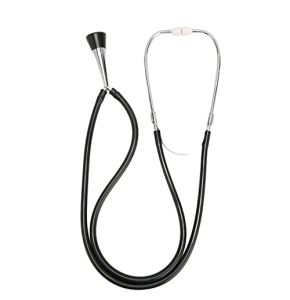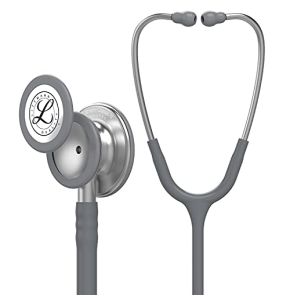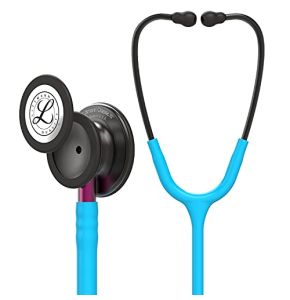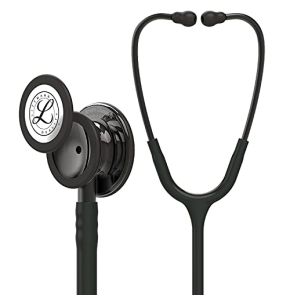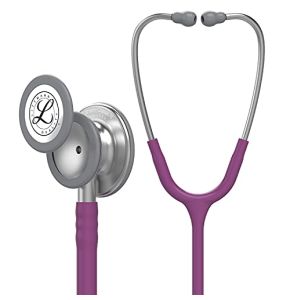Stethoscope
18/11/2024 256
18/11/2024 215
18/11/2024 285
18/11/2024 265
18/11/2024 223
18/11/2024 234
18/11/2024 186
18/11/2024 271
18/11/2024 223
18/11/2024 291
18/11/2024 210
18/11/2024 247
18/11/2024 210
The Stethoscope: An Indispensable Tool for Caregivers
It is undoubtedly one of the most iconic medical instruments. From general medicine to cardiology, it assists doctors in every medical diagnosis. But do you really know how this tool has evolved from Laennec's invention to the modern models we know today? Let's explore the history, functioning, and various types of stethoscopes to better understand this essential instrument.
The History and Evolution of the Stethoscope
In the early 19th century, René Laennec invented the first medical stethoscope. At the time, it was a simple wooden tube that allowed the practitioner to listen to bodily sounds without direct contact. This primitive stethoscope revolutionized medicine by offering a new way to examine patients. Over the years, the device underwent numerous improvements. Materials evolved, moving from wood to metal and later to plastic. Today, modern models provide superior acoustic quality and greater comfort for healthcare professionals.
How Does a Stethoscope Work?
The stethoscope operates based on simple acoustic principles. When a doctor places the chest piece on the patient's skin, sound vibrations are captured and transmitted through the tubes to the earpieces. The stethoscope diaphragm can be single or dual, allowing the practitioner to listen to different sound frequencies. Low frequencies are useful for hearing heart sounds, while high frequencies help detect lung sounds. Some models feature a dual-frequency diaphragm for enhanced acoustic sensitivity.
Different Types of Stethoscopes
There is a wide variety of stethoscopes tailored to diverse medical needs. The acoustic model is the most common and is used in general medicine. Some models, such as the Littmann Classic III stethoscope, provide exceptional acoustic quality with a dual-frequency diaphragm and dual chest piece. Electronic stethoscopes, on the other hand, amplify sounds and reduce ambient noise, making them useful in noisy environments. Specialized models, like cardiology stethoscopes, are designed for precise heart examinations. Pediatric stethoscopes are smaller and tailored for children, while obstetric stethoscopes are used to listen to fetal heartbeats. 3M Littmann stethoscopes are renowned for their quality and are often preferred by professionals.
General Guide to Choosing a Stethoscope
If you're considering purchasing a medical listening device, several factors should be considered. Acoustic quality is essential for accurate diagnosis. A professional stethoscope must offer good acoustic sensitivity to detect subtle sounds. Comfort is also important; soft earpieces, a non-chill rim on the chest piece, and lightweight design enhance the experience for both doctor and patient. The price of a medical stethoscope varies depending on the brand and features. Affordable stethoscopes are available, but quality should not be compromised. Medical students can opt for a classic model, while experienced professionals may invest in a Littmann Classic III or an electronic model.
Maintenance and Care of the Stethoscope
To ensure the longevity of your medical stethoscope, regular maintenance is necessary. Clean the earpieces and chest piece after each use to prevent infections. Regularly check the tubing for cracks or wear. Replace worn-out parts to maintain acoustic quality. Proper maintenance ensures that your device remains reliable and effective for every physical examination.
Recent Innovations in Stethoscopes
Technology has introduced many innovations to stethoscopes. Electronic models can amplify sounds up to 100 times and sometimes include features like audio recording or Bluetooth connectivity. This enables doctors to share sounds with colleagues or analyze them in more detail. Noise reduction enhances the accuracy of medical diagnoses. Recent models also incorporate lighter materials and ergonomic designs for increased comfort. For instance, 3M Littmann models are at the forefront of these innovations.
Comparison Between Acoustic and Electronic Stethoscopes
The choice between an acoustic and an electronic model depends on the specific needs of the healthcare professional. Acoustic models, whether single or dual chest piece, are reliable, do not require batteries, and are generally more affordable. They are ideal for general medicine and medical students. Electronic models offer sound amplification, ambient noise reduction, and advanced features. They are particularly useful in noisy environments or for specialties requiring precise listening, such as cardiology. Depending on the types of patients you care for, one type may be more suitable than the other.
In the end, purchasing a stethoscope is a personal decision that should consider the stethoscope's price, features, and professional needs. Whether you're looking for an affordable stethoscope or a high-end model, it is important to choose a tool that will help you provide the best care to your patients. Feel free to explore available options on Placemed to find the device that best suits your needs.
 Francais
Francais 


